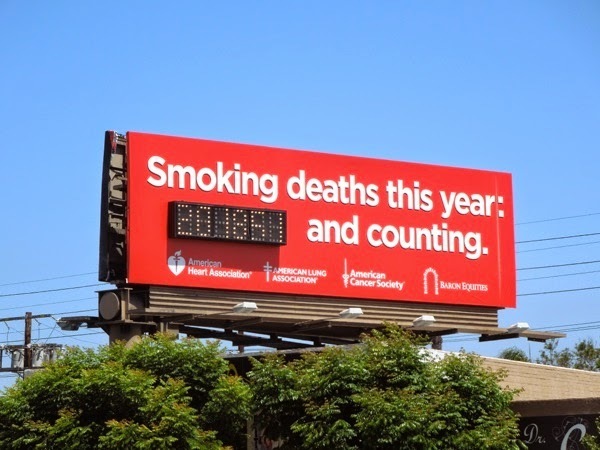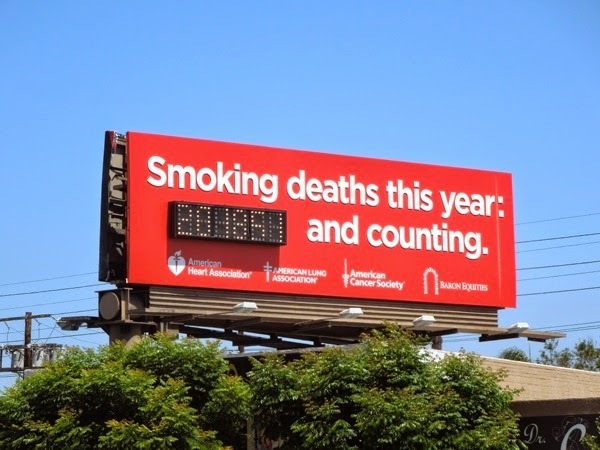Last week I was driving down the freeway in Los Angeles when I saw one of the least persuasive anti-smoking signs ever.
It’s one of those signs that looks good, and that most people will assume is effective, but it’s actually a great big persuasion dud.
Let me show you why.
Is 201,851 a big number?
It depends, right? That number is huge if you’re comparing it to 10 or 100 or 1000, but it’s quite small when up against 10,000,000.
So that number is likely to elicit both positive and negative reactions.
“Whoa! I didn’t realize so many people died from cigarettes. Crazy…”
And, “Whoa! I would’ve thought cigarettes were more deadly. Guess they aren’t as poisonous as I thought…”
From a persuasion point of view, it’s a wash.
OK—now I want you to imagine 201,851 people. Conjure them up in your head.
Great—now I want you to imagine all of them dying of lung cancer.
Unless you have a superhuman brain, you’re probably having trouble with this task.
I don’t know about you, but I can’t imagine what 201,000 of anything looks like.
And when you ask me to imagine 201,000 unique people my brain is overloaded. Yes, there’s a vague mental image there, but it’s fuzzy and… abstract.
That’s the case with all numbers (we’re really bad at thinking about them), but it’s particularly true when we’re dealing with quantities greater than 100 or 200.
We didn’t evolve to think about large groupings of anything—especially people. In fact, we evolved in small ~50 person tribes. Thus, when thinking about social groups above the 100 or 200 person mark our brain strains with the task.
So what are we good at thinking about?
Individual people & small groups.
And if you look at our brains, you’ll find that the largest portion of the cortex is dedicated to visual perception—up to 50% by some estimates (though 30% is the more frequently reported number).
In short: we’re visual thinkers that are good at thinking about individuals.
Given this, what would an effective anti-smoking ad look like?
It would probably feature a striking, emotional image of 1 or 2 people.
It would probably look something like this:
And, according to data I found, this campaign did fairly well. It got about 100,000 people to quit smoking. Given the cost of the campaign, this means that it cost ~$480 per quitter.
While that may seem high, smoking is a devilishly hard habit to impact… so that price sounds reasonable to me.
I’m sure it’s infinitely more cost-effective than the red billboard I posted above (which I bet has a cost of $500,000+ per cessation).







